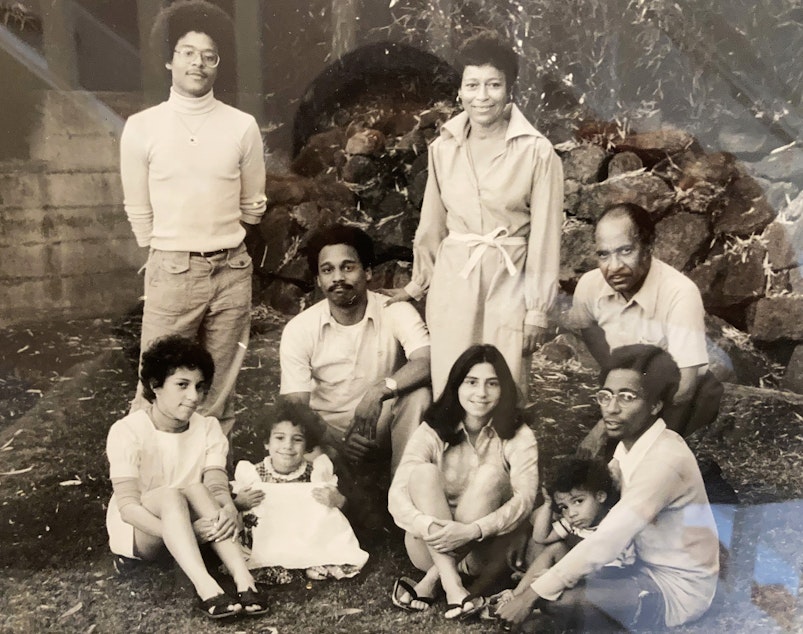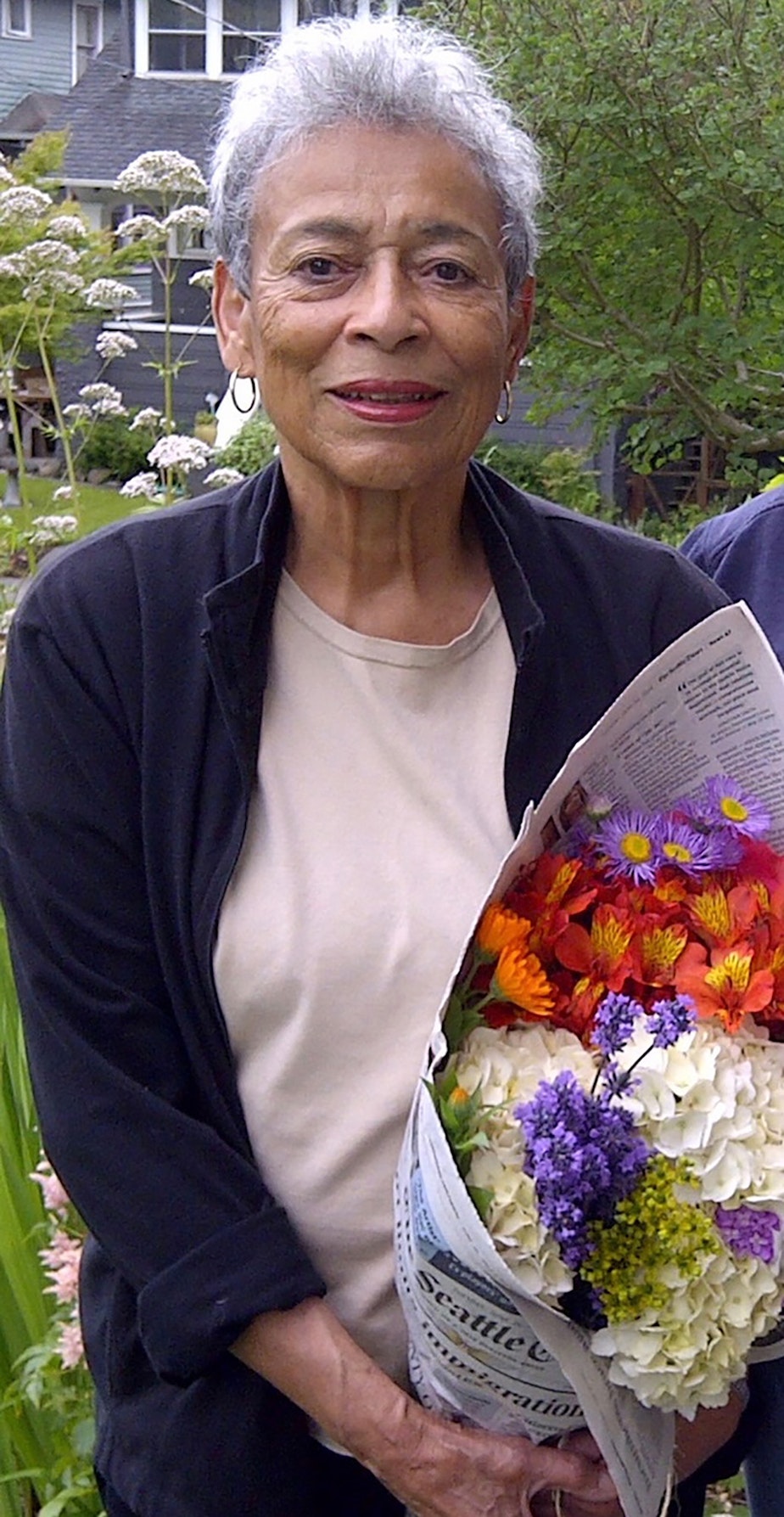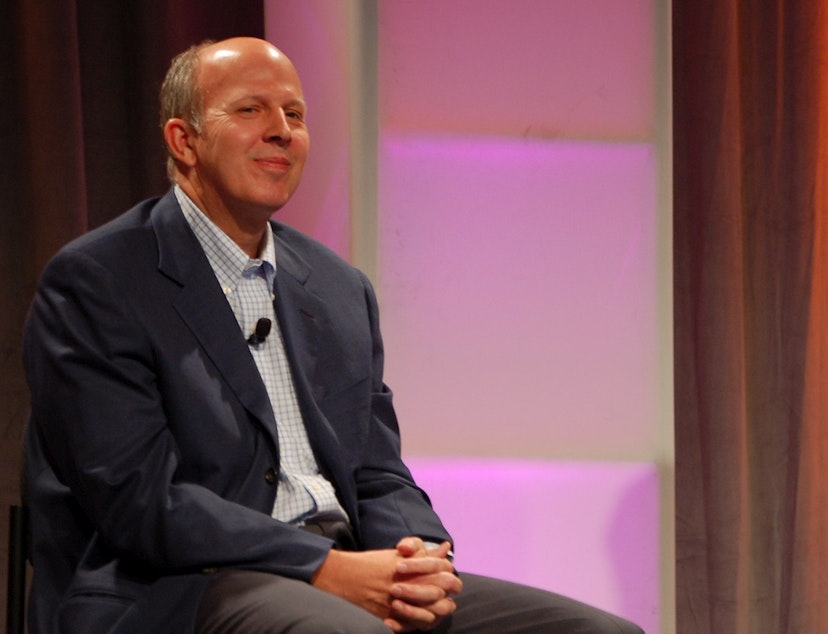How a young Black family fought John L. Scott and changed Seattle

In 1959, at a dentist’s home in Seattle, a housekeeper was told to leave early. Her employers were hosting a neighborhood meeting that evening.
As she left, she overheard their discussion: They were plotting ways to prevent a young Black doctor and his family from moving into the new Modernist house across the street. They had a secret weapon: real estate titan John L. Scott.
W
hen people move to Seattle, driving here on Interstate 90, they often describe magical joy as they whoosh across the floating bridge and through the Mount Baker tunnel, and read the words on the deck above, “Seattle, Portal to the Pacific.”
Mary Henry felt this catch of electricity when she crossed into Seattle in 1956, believing she had left racism behind. She was moving here with her husband, Dr. John Henry, a surgeon, and their three boys Bobby, Wayne, and Neil.
They were moving to Seattle because most hospitals in the South and Midwest would not give surgical privileges to Black physicians. Also, Mary Henry said, “it was the beginning of the Civil Rights movement, and we did not want the boys to be caught up in that.”
Mary Henry, now 97, was a librarian with sharp wit and a keen sense of style. She did not know in that moment, arriving in this sparkling emerald city, that she would join the movement and take on one of the most powerful men in Seattle, real estate developer John L. Scott.
Sponsored
She was also a mother, and a doctor’s wife who would, of course, live in a comfortable home.
“A friend took us driving around the city to see all the beautiful areas,” Mary Henry said, “and I decided we should live on Magnolia,” a north Seattle neighborhood that, then as now, was overwhelmingly white. “My friend burst out laughing and said, ‘You would never be allowed there.’”
The Henrys found a rental across the street from Garfield High School in the Central District, the heart of Seattle’s Black community. Mary Henry was devastated. “I cried,” she said. It wasn’t what she had in mind.
They would go on to buy a home with a Lake Washington view. But after their fourth child, a daughter, was born, they decided they wanted a bigger house in a neighborhood with top schools. This ambition would demand a fight that neither Mary Henry nor her husband would have predicted.

Sponsored
I
n the 1880s, the Central District was a wooded area with few residents.
Around this time William Grose, a wealthy Black hotelier, bought 12 acres there for $1,000 in gold and sold parcels of that land to other Black families. Slowly, the area became a vibrant hub for Black Seattleites.
Read: This Seattle pioneer worked the Underground Railroad and settled the Central District
At the time, these Black residents described a city where they were treated with respect. This changed when Washington became a state, in 1889.
Sponsored
Newcomers moved here from the South, which “was not helpful to Black people’s existence,” said Esther Mumford, author of Seattle’s Black Victorians.
By the 1920s, developers would write language into housing deeds to prevent people of color, and often Jews, from buying homes. These so-called “housing covenants” started in 1910 in Baltimore, Maryland, and soon spread to other cities.
In the 1930s, W. E. Boeing, founder of the Boeing Company, had suburbs and neighborhoods developed for his white workers. The plats included racist covenants.
“No property in said addition shall at any time be sold, conveyed, rented, or leased in whole or in part to any person or persons not of the White or Caucasian race,” these titles read.
But housing covenants are just one part of a 1,000-piece racist puzzle.
Sponsored
New Deal programs meant to lift America out of the Great Depression included money for builders to develop all-white neighborhoods and suburbs.
A federal agency drafted maps with red lines around Black neighborhoods, a practice known as redlining. To buy a house inside, or even near, that red line, your loan would likely be denied because it was in a “Black neighborhood,” and therefore considered a financial risk.
At a micro level, white homeowners refused to sell to Black families. Real estate agents wouldn’t show them houses outside the red line for fear of being outcast by colleagues. The Seattle Real Estate Board expelled an agent in 1948 for selling a home in a white neighborhood to a biracial couple.
To get around this, Black buyers asked white friends, or paid white middlemen, to secure the houses for them.

Sponsored
D
r. Henry had tried going through real estate companies to buy a home in south Seattle, to no avail.
“I had real estate people tell me how property values would decline, that my neighbors would go berserk, my children would suffer and banks wouldn’t give me loans,” he told The Seattle Times in 1963.
Word of the Henrys’ hopes reached Benjamin McAdoo, a renowned Black architect in Seattle. “Let’s see if we can get this done,” he said, according to Bob Henry, Mary Henry’s son. “I have an idea.”
They would buy a lot in the Uplands, a section of Seward Park on Lake Washington, McAdoo said, and secretly pay a white man, Franz Brodine, to broker the deal. Brodine was a property manager who spoke openly about integration. McAdoo would design the home.
“We didn't even try to reach the owner because we knew he would not sell to us,” Mary Henry said.
As building got underway, the Henrys’ future neighbors learned a Black family was moving in, and they organized to keep them out. They circulated petitions and tried to bribe the Henrys to keep them out.
The Henrys learned of this because they had inside intel. A patient of Dr. Henry’s worked in the home of a dentist who lived across the street from the Henrys’ new home. One night, she was told to leave early because there would be a meeting.
“She lingered and was able to hear what was going on,” Mary Henry said.
Dr. Henry’s secretary, whose parents lived in Seward Park, shared that someone had come by with a petition to keep out the Henrys.
Meanwhile, John L. Scott, a developer and founder of the real estate company that bears his name, offered the Henrys $100,000 to walk away. The house itself cost $45,000.
“I, of course, felt that perhaps maybe we should not move in, maybe we could find someplace else,” Mary Henry said. “My husband said no, it was the principle of the thing.”
As the house neared completion, Dr. Henry drove to the Uplands to knock on his future neighbors’ doors to introduce himself, hoping they might soften if they met him.
“My father got little satisfaction when he visited our white neighbors on those cool autumn nights after dinner,” wrote Neil Henry, the Henrys’ third child, in his book, Pearl’s Secret. “Only fear and empty words about declining property values.”
Henry, a former correspondent for The Washington Post, combined history and investigative reporting in this personal account. He wrote that his father, frustrated, went downtown to appeal directly to John L. Scott. Scott was a Scottish immigrant who had served in the Royal Air Force during World War I. He had moved to the U.S. after the war.
“Why are you doing this?” Dr. Henry asked Scott, according to his son Neil’s account. “Do you even know any Negroes? How can you do this when you don’t even know us?’”
“This is business,” Scott replied. “It’s about what’s best for us, and what’s best for you in the long run. And I do know Negroes, Dr. Henry. I like Negroes a great deal. That fellow downstairs shining shoes in the lobby. His name’s Sam. He’s one of my best pals.”
Dr. Henry called Seattle Mayor Gordon Clinton, who asked the Civic Unity Committee to get involved. Members of the task force sent letters to the neighbors, which seemed to temper the issue.
Scott told a member of the committee that he considered Dr. Henry “no gentleman,” and wondered “how he ever got to be a doctor.”
When the Henrys finally did move in, “the earth didn’t shake, and the children did well in school,” Mary Henry said. “The teachers were good. The principal was wonderful.”
Two neighbors showed signs of warmth: a Jewish family and the woman who lived directly behind them, who stood at her window and waved. Otherwise … crickets.
The neighbors were cold at first but warmed over the 22 years the Henrys lived in the house, Mary Henry said. When her father visited, the next door neighbor took him on a fishing trip. Up the street, a man who hadn’t let his grandson play with one of the Henry boys got to know Dr. Henry. When the man died, the only people who attended his funeral were his widow, his children, his secretary — and John and Mary Henry.
“Time does heal,” Mary Henry said.
Dr. Henry would later say moving into the home was a great moment of pride, Neil Henry wrote, but it took a toll.
“For that experience, he had to endure a great deal of hurt, just as he did so many times growing up in the South. And as with so many things about my father, I never understood exactly how he did it,” he wrote.
“Certainly he carried himself with an outward sense of purpose, pride, style, and conviction, but he repressed many demons deep inside him. Beneath the skin he kept tightly contained a box of pain, sorry, and rage whose depth none of us, even my mother, ever really knew.”

L
ennox Scott, 66, now runs the company his grandfather founded. He hadn’t heard of the Henrys until last summer, not long after George Floyd was murdered by a Minneapolis police officer.
“The interaction that my grandfather was reported to have had with the Henrys – it was wrong,” he said. “They didn’t deserve it.”
The incident didn’t square with how Lennox Scott saw his beloved granddad, however.
John L. Scott had hosted Haile Selassie, emperor of Ethiopia, Lennox Scott said. That was five years before he challenged the Henrys.
“I was raised non-racist,” Lennox Scott said. “There was no racism at all about my upbringing from my grandparents and my parents. But that doesn’t change what happened.”
He sent a private message to Mary Henry this year, apologizing on behalf of the company and his grandfather.
It has been a year of racial reckoning for Lennox Scott. George Floyd’s death shook him into action, he said. “I was aware, but I wasn't in tune,” he said. “I didn't have a feeling in me until the horrific death of George Floyd.”
This year, he helped pass legislation to make it easier for homeowners to scrub racist covenants from their titles.
He read The Color of Law, about the history of racist housing practices, and asked people at his company to read it too. After reading that Black students who'd had two or more Black teachers were far more likely to attend college, he launched a scholarship to pay for teacher certification.
“We need to figure out what we can do to help lift up more Black Americans for opportunity,” Lennox Scott said. “That's what's going to come out of this.”
This all may be too late, unfortunately.
Generational wealth has put white Americans at a tremendous buying advantage, and housing prices continue to rise.
The neighborhood inside the red line has now been completely gentrified; today, just 14 percent of the Central District is Black, down from 68 percent in 1970.
Meanwhile, although housing discrimination has been illegal since 1968, it persists in insidious ways. In today’s hot market, for example, buyers are encouraged to write letters, written in English, with family photos affixed.
Ron Sims, the former King County executive, and former assistant secretary for the U.S. Department of Housing and Urban Development (HUD), said he was barely able to buy his house in Mount Baker in 1978, a decade after housing discrimination became illegal.
His house had a racist covenant, but that wasn’t the issue – the sellers were willing, and the covenant wasn’t enforceable, anyway. He had a steady government job and money from his father to help pay for the down payment.
At issue was that banks wouldn’t give him a loan – presumably because he was buying a house so near the old red line. Mortgage insurance companies wouldn’t sell him insurance.
A credit union came through for him, as did a State Farm agent.
“I walked in, and he knew, as soon as I walked in,” Sims said. “He smiled, because I was not the first, nor do I suspect the last, to find out that insurance was incredibly difficult if you were buying a house outside the Seattle Central Area.”
State Farm has insured his house since, Sims said, and the company always will.
Mary Henry said she loves Seattle and doesn’t regret moving here. But that early experience opened her eyes.
“We had thought this was the great, great Northwest, that there wouldn't be any kind of racial problems,” Mary Henry said. “We soon found out that it was no different here than anyplace else. It was just more subtle.”


